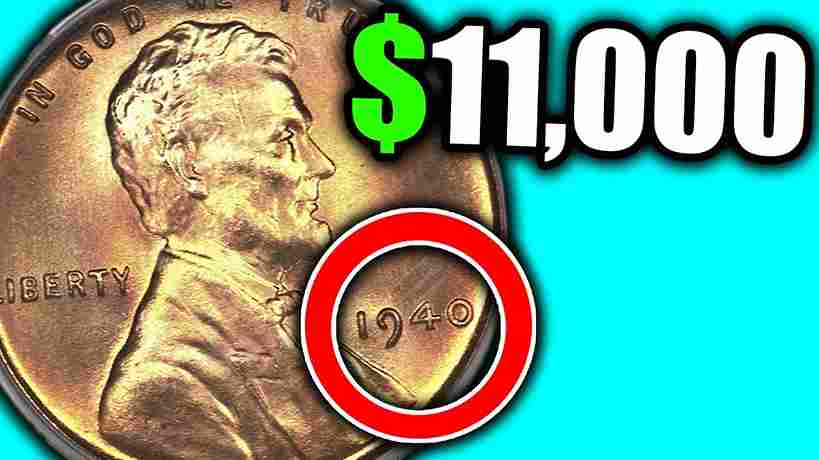Lincoln Wheat Penny The Lincoln Wheat Penny Is Worth $21 Million—Fact or Fiction? Imagine reaching into your pocket for change and pulling out a penny—and discovering it could be worth $21 million. Sounds like a dream, right? But for coin collectors and history buffs, it’s not just fiction. The famous Lincoln Wheat Penny, first minted in 1909 to honor President Abraham Lincoln, has become one of the most sought-after coins in U.S. history.
Although most wheat pennies are worth just a few cents or dollars, some ultra-rare varieties—like the 1943 bronze penny or the 1909-S VDB—can sell for millions at auction. Because of rarity, historical value, and collector demand, stories of Lincoln pennies selling for $21 million are common in the numismatic world. Whether myth or fact, the story of the $21 million penny continues to inspire people to take a closer look at their cash.
How to Identify a Valuable Lincoln Wheat Penny
If you want to know if your old penny is worth more than a cent, here are some key features to look for. First, check the year and mint mark—1909 (especially 1909-S VDB), 1914-D, 1922 without D, and 1955 doubled die coins are the most valuable. Next, check the metal composition. A 1943 penny should be steel; if it’s copper, you may have hit the jackpot. Also check the coin’s condition—a coin graded MS-65 or higher by professional grading services like PCGS or NGC can fetch a good price. Finally, look for errors like off-center marks, doubled dies, or missing mint marks. Even minor errors can turn an ordinary penny into a collector’s dream.
Could it still be in circulation?
While the chances are low, it’s not entirely impossible. History shows that ultra-rare coins—including valuable Lincoln Wheat Pennies—have been found in unexpected places: inherited family collections, estate sales, garage cleaning, or even as pocket money. Many people don’t recognize the subtle differences between ordinary and exceptional coins, meaning a penny worth millions of dollars could be sitting in a coin jar or accidentally used in a vending machine. If the famous Lincoln Wheat Penny worth $21 million really exists, it could still be out there—waiting to be discovered by someone who takes a closer look.
What to Look for
If you want to know if your Wheat Penny is special, here are some high-value features to look for:
- 1943 Copper Penny (should have been steel)
- 1944 Steel Penny (should have been copper)
- 1909-S VDB (rare first edition from San Francisco)
- Double die errors (look for date or “LIBERTY”)
- Obsolete or Proof-like condition
Final Thoughts
The story of the $21 million Lincoln Wheat Penny continues to inspire both collectors and coin enthusiasts. Whether the coin really exists or is just a myth, its tale illustrates the thrill of discovery and the hidden value in everyday change. That’s the magic of numismatics—where history, rarity, and curiosity meet. So the next time you find an old coin with a stalk of wheat on the back, don’t ignore it. That little copper coin is worth more than just face value—it could be a piece of American history, or even a life-changing treasure.
FAQ: The Lincoln Wheat Penny Worth $21 Million – Could It Still Be Out There?
Q1. Is there really a Lincoln Wheat Penny worth $21 million?
While no Lincoln Wheat Penny has officially sold for $21 million, some ultra-rare versions — like the 1943 copper penny or 1944 steel penny — have fetched hundreds of thousands to millions of dollars at auction. If a previously unknown error or perfect-condition specimen is discovered, it could potentially reach such a high value in a private sale.
Q2. What makes a Lincoln Wheat Penny valuable?
Several key factors determine a Wheat Penny’s value:
-
Rare dates and mint marks (e.g., 1909-S VDB, 1943 copper, 1944 steel)
-
Minting errors like double dies, off-centers, or wrong metal strikes
-
Low mintage numbers
-
Uncirculated or high-grade condition (like MS-65 or higher)
Q3. Could the $21 million penny still be in circulation?
While it’s extremely rare, it’s not impossible. Valuable coins have surfaced in coin jars, estate collections, or even spare change. A rare Wheat Penny might still be hiding in plain sight — in someone’s pocket, coin roll, or forgotten piggy bank.
